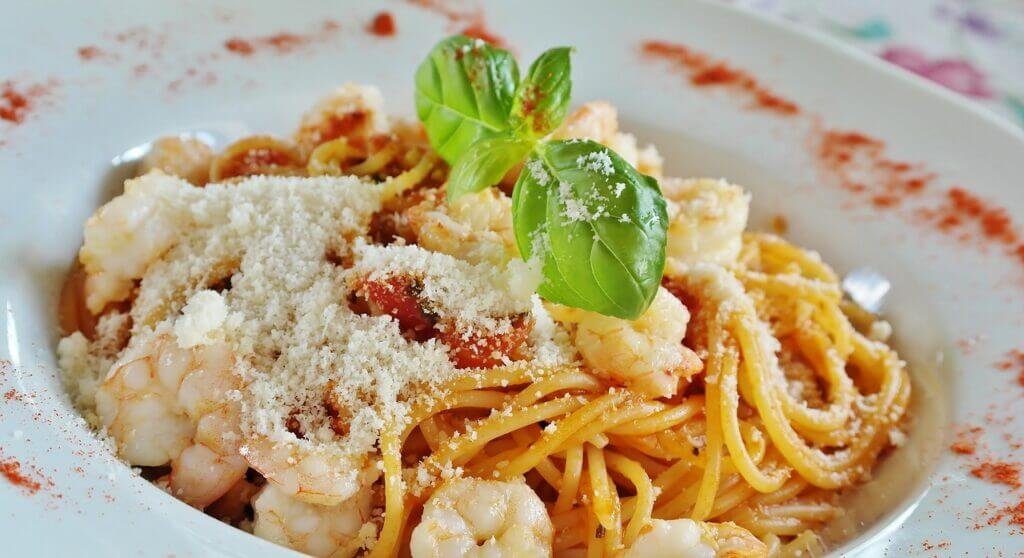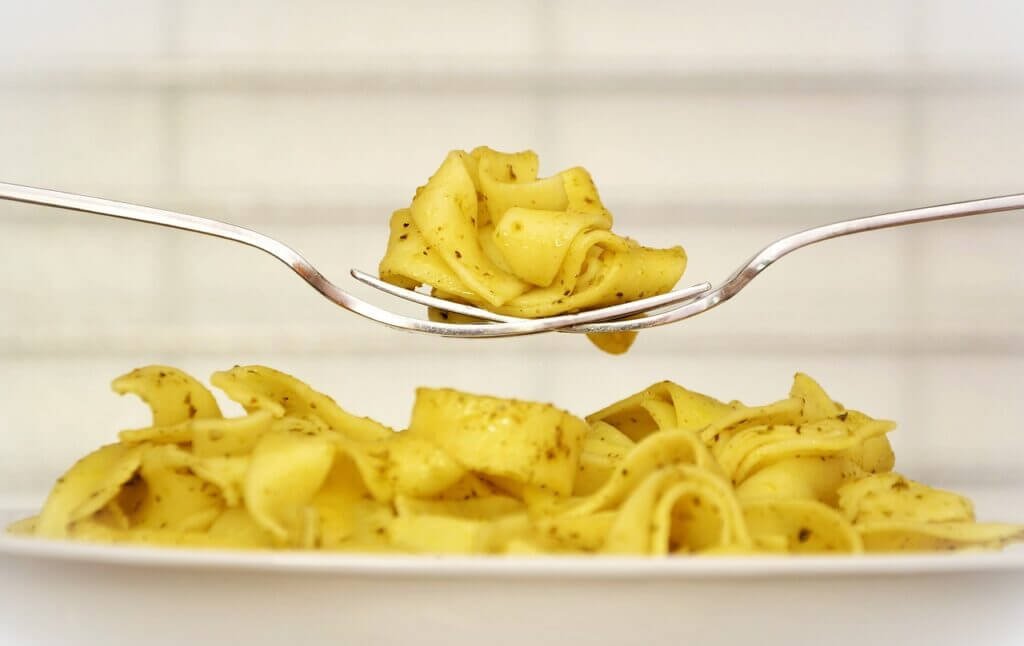Imagine a steaming plate of al dente spaghetti, generously coated in a rich and flavorful meat sauce. The familiar dish known as Classic Spaghetti Bolognese is a timeless favorite that has delighted taste buds across the globe for decades. With its origins rooted in the Italian city of Bologna, this iconic pasta dish combines tender ground beef, aromatic herbs, and tomatoes into a harmonious symphony of flavors. Whether you’re a pasta lover or simply craving a comforting meal, Classic Spaghetti Bolognese is sure to satisfy your culinary cravings.
Ingredients
To make a classic spaghetti Bolognese, you will need the following ingredients:
Ground beef
Ground beef is one of the key components in this dish. It provides the hearty and rich flavor that is essential to a classic Bolognese sauce.
Onion
Onions add a savory and slightly sweet flavor to the Bolognese sauce. They also help to create a delicious aroma when sautéed with the other ingredients.
Carrot
Carrots add a touch of sweetness and a vibrant color to the sauce. They also provide a slight crunch and enhance the overall texture of the dish.
Celery
Celery is another vegetable that adds depth and flavor to the Bolognese sauce. It brings a pleasant herbal note and a subtle crunch to every bite.
Garlic
Garlic is a must-have ingredient in any Italian dish. It adds a pungent and aromatic flavor that complements the other ingredients in the sauce.
Tomato paste
Tomato paste is used to intensify the tomato flavor in the sauce. It adds richness and thickness, giving the sauce a luscious texture.
Canned diced tomatoes
Canned diced tomatoes provide a bright and tangy flavor to the sauce. They add acidity and freshness to balance out the richness of the meat.
Red wine
Red wine is a classic ingredient in Bolognese sauce. It adds depth and complexity to the flavor profile. The alcohol cooks off during the simmering process, leaving behind a rich and velvety sauce.
Beef broth
Beef broth helps to enhance the meaty flavor and adds richness to the sauce. It also provides some additional liquid to simmer the sauce.
Dried oregano
Dried oregano is a classic Italian herb that pairs perfectly with the flavors in the Bolognese sauce. It adds an earthy and slightly peppery taste.
Dried basil
Dried basil complements the other herbs and spices in the sauce. It adds a slightly sweet and aromatic note to the overall flavor.
Salt
Salt is essential for enhancing the flavors in the sauce. It balances out the sweetness of the tomatoes and brings all the other ingredients together.
Black pepper
Black pepper adds a subtle heat and a touch of spiciness to the sauce. It complements the other herbs and spices, creating a well-rounded flavor.
Bay leaves
Bay leaves are used to infuse the sauce with their unique fragrance and subtle herbal taste. They add depth and complexity to the overall flavor profile.
Spaghetti noodles
Spaghetti noodles are the classic choice for serving Bolognese sauce. Their long and cylindrical shape allows the sauce to cling to them, ensuring each bite is packed with flavor.
Parmesan cheese
Parmesan cheese is the perfect finishing touch for any pasta dish and spaghetti Bolognese is no exception. The nutty and savory flavor of Parmesan complements the rich meat sauce.
Preparation
Before we start cooking, it’s important to prepare the ingredients:
Chop vegetables
Start by chopping the onion into small, even pieces. Dice the carrot and celery into similar-sized chunks. This ensures that they cook evenly and blend seamlessly into the sauce.
Sauté vegetables
Heat some olive oil in a large pot over medium heat. Add the onion, carrot, celery, and minced garlic. Sauté them until they are soft and fragrant. This step helps to release their flavors and create a solid foundation for the sauce.
Brown ground beef
Once the vegetables are cooked, add the ground beef to the pot. Break it up with a spoon and cook until it is browned and no longer pink. This step adds richness and depth to the sauce.
Add tomato paste
Stir in the tomato paste. Cook it for a minute or two to caramelize slightly and bring out its flavors. This step intensifies the tomato flavor in the sauce.
Add diced tomatoes
Pour in the canned diced tomatoes along with their juices. Stir everything together to combine the flavors.
Pour in red wine
Add the red wine to the pot. This step adds complexity and richness, as the wine reduces and mingles with the other ingredients.
Add beef broth
Pour in the beef broth, which provides additional liquid to simmer the sauce. It also adds richness and depth to the flavor profile.
Season with herbs and spices
Sprinkle in the dried oregano, dried basil, salt, and black pepper. These herbs and spices enhance the flavors of the sauce, giving it a robust and aromatic profile.
Add bay leaves
Drop in a couple of bay leaves. They infuse the sauce with their signature aroma and deepen the overall flavor.
Simmer the sauce
Reduce the heat to low and let the sauce simmer for about an hour. This slow cooking process allows the flavors to meld together and intensify. Stir occasionally to prevent sticking and to ensure even cooking.
Boil pasta noodles
While the sauce is simmering, bring a large pot of salted water to a boil. Cook the spaghetti noodles according to the package instructions until al dente. This ensures perfect texture and consistency.

Tips
Here are some tips to ensure your spaghetti Bolognese turns out delicious:
Selecting the right meat
Choose ground beef with at least 80% lean meat and 20% fat content. This ratio provides the right amount of richness and flavor to the sauce.
Properly chopping the vegetables
Take your time to chop the vegetables into small, even pieces. This ensures even cooking and a balanced distribution of flavors throughout the sauce.
Cooking the sauce slowly
Don’t rush the simmering process. Let the sauce cook slowly over low heat to allow the flavors to develop fully. This slow cooking method ensures a deeply flavorful sauce.
Tasting and adjusting seasonings
Keep tasting the sauce as it simmers and adjust the seasonings to your preference. Remember that the flavors will continue to deepen as the sauce cooks, so be mindful not to over-season initially.
Serving suggestions
Traditionally, spaghetti Bolognese is served with a generous sprinkling of grated Parmesan cheese on top. You can also add a side of garlic bread or a simple green salad to complete the meal.
Step-by-step Instructions
Now let’s dive into the step-by-step instructions for making classic spaghetti Bolognese:
Chop the onion
Start by chopping the onion into small, even pieces. Set aside for later use.
Dice the carrot and celery
Next, dice the carrot and celery into similar-sized chunks. This ensures even cooking and optimal blending with the other ingredients.
Mince the garlic
Finely mince the garlic cloves. This releases their flavors and ensures they are not overpowering in the sauce.
Heat olive oil in a large pot
Place a large pot over medium heat and add some olive oil. Heat the oil until it shimmers, indicating that it’s hot and ready.
Sauté the onion, carrot, celery, and garlic
Add the chopped onion, diced carrot, diced celery, and minced garlic to the pot. Sauté them until they are soft and fragrant, usually around 5 minutes.
Add the ground beef and brown it
Once the vegetables are cooked, add the ground beef to the pot. Break it up with a spoon and cook until it is browned and no longer pink, usually around 8-10 minutes.
Stir in tomato paste
Add the tomato paste to the pot and stir it in with the cooked meat and vegetables. Cook for a minute or two to caramelize the tomato paste slightly.
Pour in canned diced tomatoes
Pour in the canned diced tomatoes, including the juices. Stir everything together, ensuring that the tomatoes are well-distributed in the sauce.
Add the red wine
Pour in the red wine and stir it into the other ingredients. This adds depth and complexity to the sauce.
Pour in beef broth
Add the beef broth to the pot, providing additional liquid for simmering the sauce. It also adds richness to the flavor profile.
Season with oregano, basil, salt, and black pepper
Sprinkle in the dried oregano, dried basil, salt, and black pepper. These herbs and spices add depth and flavor to the sauce. Stir everything together.
Add bay leaves
Drop a couple of bay leaves into the pot. They infuse the sauce with their aromatic flavor and deepen the overall taste.
Simmer the sauce for about an hour
Reduce the heat to low and let the sauce simmer for about an hour. Stir occasionally to prevent sticking and to ensure even cooking. The longer the sauce simmers, the more flavorful it becomes.
Cook the spaghetti noodles in a separate pot
While the sauce is simmering, bring a large pot of salted water to a boil. Cook the spaghetti noodles according to the package instructions until al dente. Drain the noodles and set them aside.
Serve the spaghetti Bolognese with grated Parmesan cheese
To serve, place a portion of the cooked spaghetti noodles on a plate or in a bowl. Ladle a generous amount of the Bolognese sauce on top. Finish with a sprinkling of grated Parmesan cheese. Enjoy!

Variations
Whether you’re looking to adapt the recipe to dietary preferences or add some extra flair, here are some variations to consider:
Vegetarian spaghetti Bolognese
For a vegetarian twist, replace the ground beef with meatless crumbles or a combination of vegetables such as mushrooms, zucchini, and bell peppers. The rest of the recipe remains the same.
Turkey or chicken Bolognese
Swap out the ground beef for ground turkey or ground chicken to create a lighter and leaner version of the dish. The cooking process remains the same.
Whole wheat or gluten-free spaghetti
If you prefer a healthier option or have dietary restrictions, use whole wheat or gluten-free spaghetti noodles instead of traditional ones. Be sure to adjust the cooking time according to the package instructions.
Adding extra vegetables
Feel free to experiment by adding additional vegetables to the sauce. Spinach, bell peppers, and mushrooms are great options that add flavor and nutritional value.
Spicy spaghetti Bolognese
If you like a little heat, add some crushed red pepper flakes or a chopped chili pepper to the sauce. Adjust the amount according to your spice tolerance.
History
The origins of Bolognese sauce, also known as ragù alla Bolognese, can be traced back to the region of Emilia-Romagna in northern Italy. The sauce is named after the city of Bologna, which is famous for its rich culinary heritage.
The authentic Bolognese sauce is quite different from what is commonly known as spaghetti Bolognese. The traditional sauce consists of finely minced or ground meat, such as beef, pork, or veal, cooked with vegetables, tomatoes, and a small amount of tomato paste. It is a slow-cooked sauce that requires great care and attention to achieve the perfect balance of flavors.
The evolution of spaghetti Bolognese happened when Italian immigrants brought their culinary traditions to different parts of the world. In order to adapt to local ingredients and tastes, variations of the original Bolognese sauce emerged. The recipe typically includes ground beef, onions, garlic, tomatoes, and herbs, simmered together to create a flavorful and satisfying sauce.
Today, spaghetti Bolognese is a popular dish not only in Italy but in many countries around the world. It has become a staple in many households, loved for its comforting flavors and versatility. Each region and cook has their own unique twist on the classic recipe, making it a truly global favorite.

Nutritional Information
While spaghetti Bolognese is a delicious and satisfying meal, it’s important to be aware of its nutritional content:
Calories
The calorie content of spaghetti Bolognese can vary depending on factors such as portion size and the exact ingredients used. On average, a serving of spaghetti Bolognese with meat sauce contains around 400-600 calories.
Protein
Spaghetti Bolognese is a good source of protein, thanks to the ground beef. A typical serving provides about 20-30 grams of protein, which is important for building and repairing tissues in the body.
Carbohydrates
The main source of carbohydrates in spaghetti Bolognese comes from the pasta noodles. A serving usually contains around 50-70 grams of carbohydrates, providing energy for the body.
Fat
The fat content in spaghetti Bolognese comes primarily from the ground beef and any added oils. A serving typically contains 10-20 grams of fat, with some variation depending on the ingredients used.
Vitamins and minerals
Spaghetti Bolognese can be a good source of vitamins and minerals, especially if extra vegetables are added to the sauce. It may provide significant amounts of vitamin C, vitamin A, iron, and potassium, among other nutrients.
Common Mistakes to Avoid
To ensure your spaghetti Bolognese turns out perfectly, be mindful of the following common mistakes and avoid them:
Using lean ground beef
Using lean ground beef may result in a drier and less flavorful sauce. The fat in the beef adds richness and enhances the overall taste. Aim for ground beef with at least 80% lean meat and 20% fat content.
Skipping the wine
While it is possible to make spaghetti Bolognese without red wine, it adds depth and complexity to the sauce. The alcohol cooks off during the simmering process, leaving behind a rich and velvety flavor. If you don’t consume alcohol, you can substitute it with beef broth or vegetable broth.
Overcooking the sauce
Overcooking the sauce can result in a loss of flavors and a dry consistency. The sauce should be simmered for about an hour to allow the flavors to develop fully. Be sure to stir occasionally and check the consistency to prevent over-reduction or sticking to the pot.

FAQs
Here are some frequently asked questions about spaghetti Bolognese:
Can I use a different type of pasta?
Absolutely! While spaghetti is the classic choice, you can use any type of pasta you prefer. Penne, fettuccine, or rigatoni are great alternatives that will work well with the Bolognese sauce.
Can I freeze leftover sauce?
Yes, spaghetti Bolognese sauce freezes well. Allow the sauce to cool completely, then transfer it to an airtight container or freezer-safe bag. It can be stored in the freezer for up to three months. Thaw it in the refrigerator overnight before reheating.
Can I make this dish in advance?
Yes, spaghetti Bolognese can be made in advance. In fact, the flavors often deepen and improve when the sauce is made ahead of time. You can prepare the sauce a day or two in advance, refrigerate it, and simply reheat it when you are ready to serve.
Conclusion
Classic spaghetti Bolognese is a timeless recipe that never fails to satisfy. With its rich and flavorful sauce combined with perfectly cooked pasta, it is a beloved dish around the world. Whether you stick to the traditional recipe or give it your own twist, spaghetti Bolognese is sure to become a favorite in your household. So gather your ingredients, follow the step-by-step instructions, and indulge in a delicious bowl of spaghetti Bolognese tonight!



